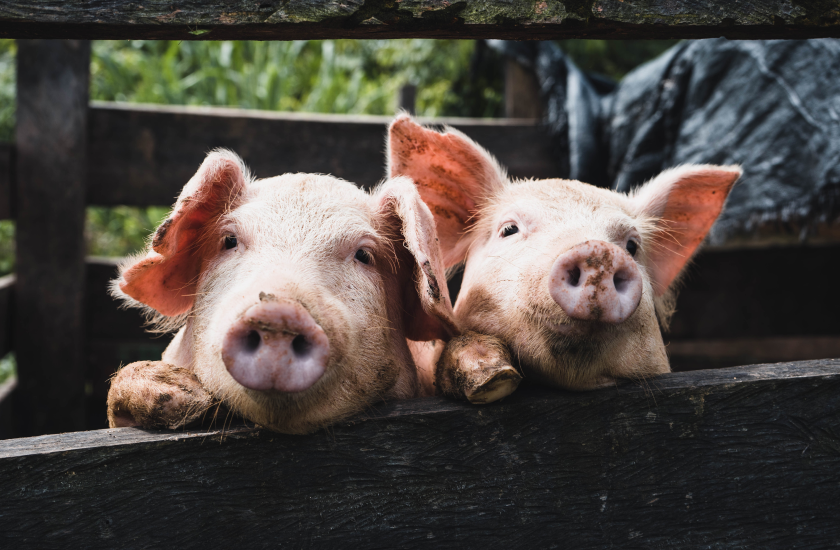Pork
-
Beefs
Beefs
-
Chicken
Chicken
-
Pork
Pork
-
Eggs
Eggs
-
Fish
Fish
-
Lamb
Lamb
-
Goat meat
Goat meat
-
Honey
Honey
-
Sea Food
Sea Food
-
Milk
Milk
-
Cheese
Cheese
-
Yogurt
Yogurt
Our Brochures
Contact Us
Social Media


Pork is the culinary name for the meat of the pig. It is the most commonly consumed meat worldwide, with evidence of pig husbandry dating back to 5000 BCE. Pork is eaten both freshly cooked and preserved; curing extends the shelf life of pork products. Ham, gammon, bacon, and pork sausage are examples of preserved pork. Charcuterie is the branch of cooking devoted to prepared meat products, many from pork.
Pork Protein
Like all meat, pork is mostly made up of protein.
The protein content of lean, cooked pork is around 26% by fresh weight. When dry, the protein content of lean pork can be as high as 89% — making it one of the richest dietary sources of protein.
It contains all nine essential amino acids necessary for your body’s growth and maintenance. In fact, meat is one of the most complete dietary sources of protein.
For this reason, eating pork — or other types of meat — may be particularly beneficial for bodybuilders, recovering athletes, people post-surgery, or others who need to build up or repair muscles.
Pork Fat
Pork’s fat content varies, typically ranging between 10-16%, and can be higher based on factors like trimming. It contains nearly equal amounts of saturated and unsaturated fats, with a 3.5-ounce serving having around 7.7 grams of saturated fat and 11.2 grams of unsaturated fat. Lard, derived from pig fat, is used in cooking. Pork’s fatty acid composition differs slightly from ruminant meats like beef and lamb.
Pig Farming
Pig farming or pork farming or hog farming is the raising and breeding of domestic pigs as livestock, and is a branch of animal husbandry. Pigs are farmed principally for food (e.g. pork: bacon, ham, gammon) and skins.
Pigs are amenable to many different styles of farming: intensive commercial units, commercial free range enterprises, or extensive farming (being allowed to wander around a village, town or city, or tethered in a simple shelter or kept in a pen outside the owner’s house).
Pig farming
Pork farming
Hog farming
Raising and breeding
Domestic pigs
Livestock
Animal husbandry
Food production
Production and trade
Pigs are farmed in many countries, though the main consuming countries are in Asia, meaning there is a significant international and even intercontinental trade in live and slaughtered pigs. Despite having the world’s largest herd, China is a net importer of pigs as China consumes about 50% of global pork production. The total amount of pork consumed in China is 57 million tons (as of 2021) and pork accounted for 60 percent of total meat consumption within the country. China has been increasing its imports during its economic development; many within China’s population of 1.2 billion people prioritize eating pork as their main consumption of meat, unlike other countries where most people would prioritize having poultry.

